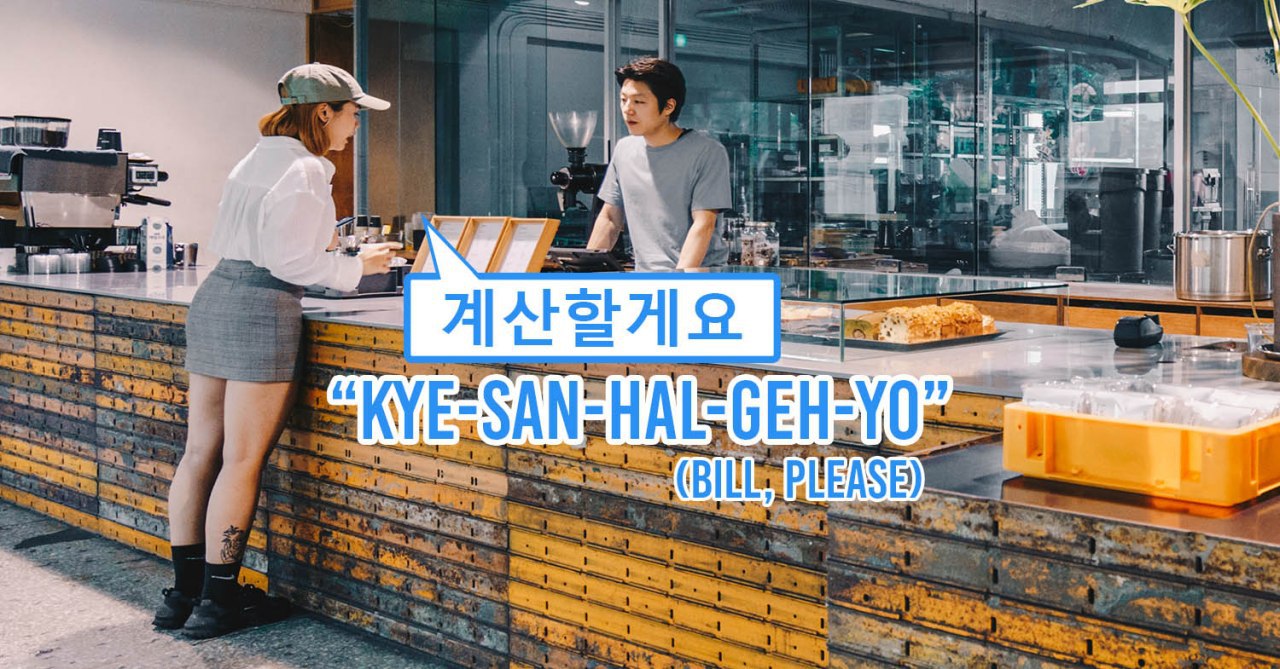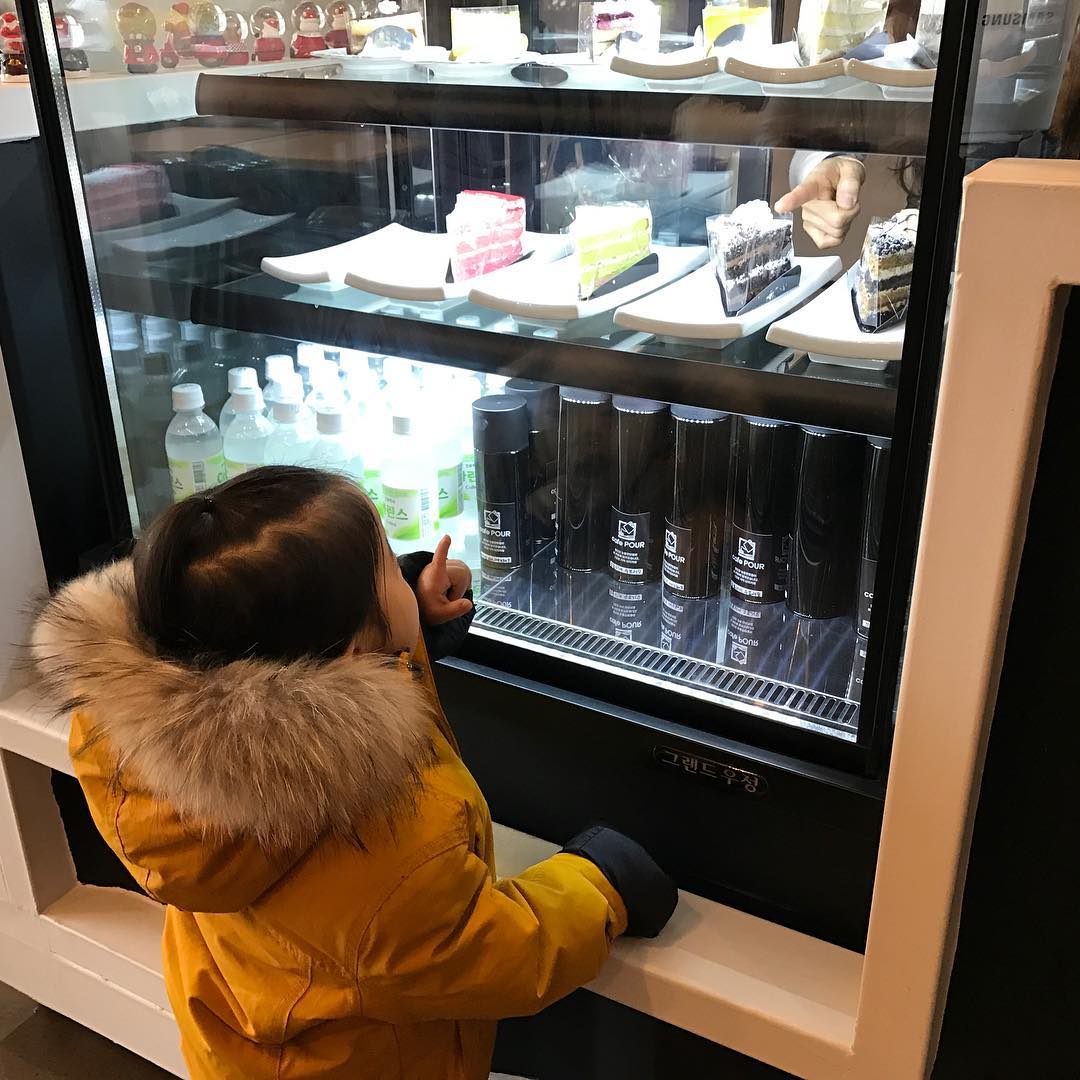Essential Korean phrases for restaurants

Image adapted from: Eatbook
We have all experienced this before. We go to a foreign land where English is not commonly spoken and inevitably get nervous about speaking to the restaurant staff. In a country like Korea where their food can be too spicy for some people, getting the kitchen to customise your order can be a challenging experience.
Learning a few simple Korean phrases can go a long way in getting simple orders and requests across. That is why we have curated this list of 15 essential Korean phrases that are both easy to learn and will make ordering at a foreign restaurant a breeze. Just be sure to get your jjamppongs (spicy seafood noodles) and kkanpoonggis (fried chicken) right.
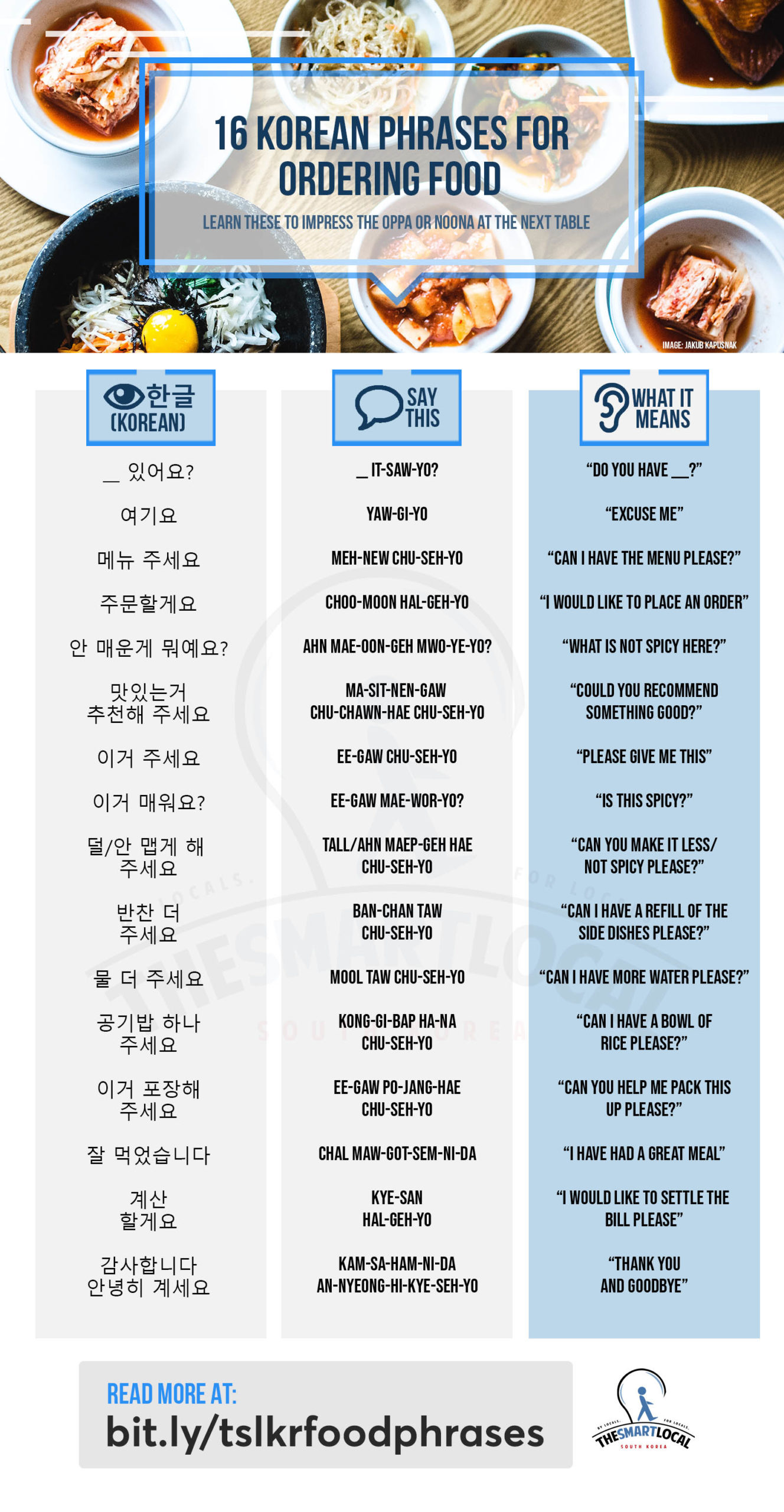
Download this infographic to refer to for your next Korea trip
1. “Do you have ___?” (___ isseoyo?)
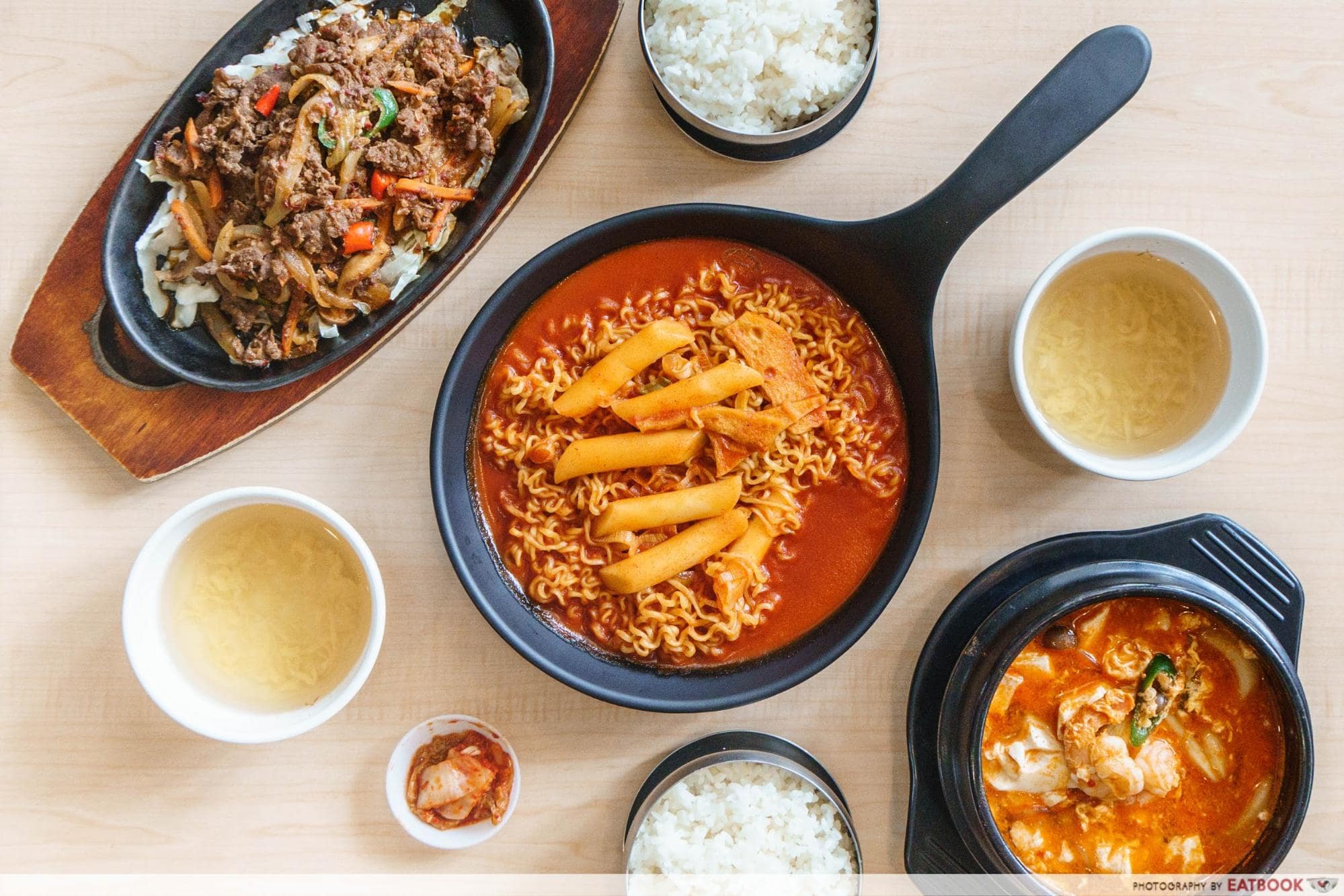 Image credit: Eatbook
Image credit: Eatbook
In Korean (Hangeul): __ 있어요?
How to pronounce: __ it-saw-yo?
It’s been a long day and all you want to get is a bowl of piping hot kimchi stew. However, you have no clue what is on the menu. When that happens, instead of asking “you all got kimchi stew or not ah?”, say “kimchi stew it-saw-yo?”. This phrase can be used anywhere to ask if they have the item you are looking for. Heck, you could even use it to ask the oppa sitting at the next table if he “yawja chingoo (girlfriend) it-saw-yo?”.
2. “Excuse me” (Yeogiyo)

Image credit: @anna_01_09
In Korean (Hangeul): 여기요
How to pronounce: yaw-gi-yo
This phrase literally means “over here”. It’s an omnipotent phrase used to call for attention like “hey, look over here”. At the restaurant and need somebody to come to you? Yaw-gi-yo. Testing out samples at a shop and need assistance? Yaw-gi-yo. Just don’t confuse it with Yugi-oh, the Japanese manga series.
3. “Can I have the menu please?” (Menyu juseyo)

Image credit: @iamthebrightestsun
In Korean (Hangeul): 메뉴 주세요
How to pronounce: meh-new chu-seh-yo
Yes, shouting “menu” while flailing your arms in the air frantically might just get you the menu, but we believe in asking for things politely. Instead, say “meh-new chu-seh-yo”, which means “can I have the menu”. Most modern restaurants these days provide English menus with pictures, but do note that traditional Korean eateries may have the menu plastered on the walls instead.
4. “I would like to place an order” (Jumunhalgeyo)
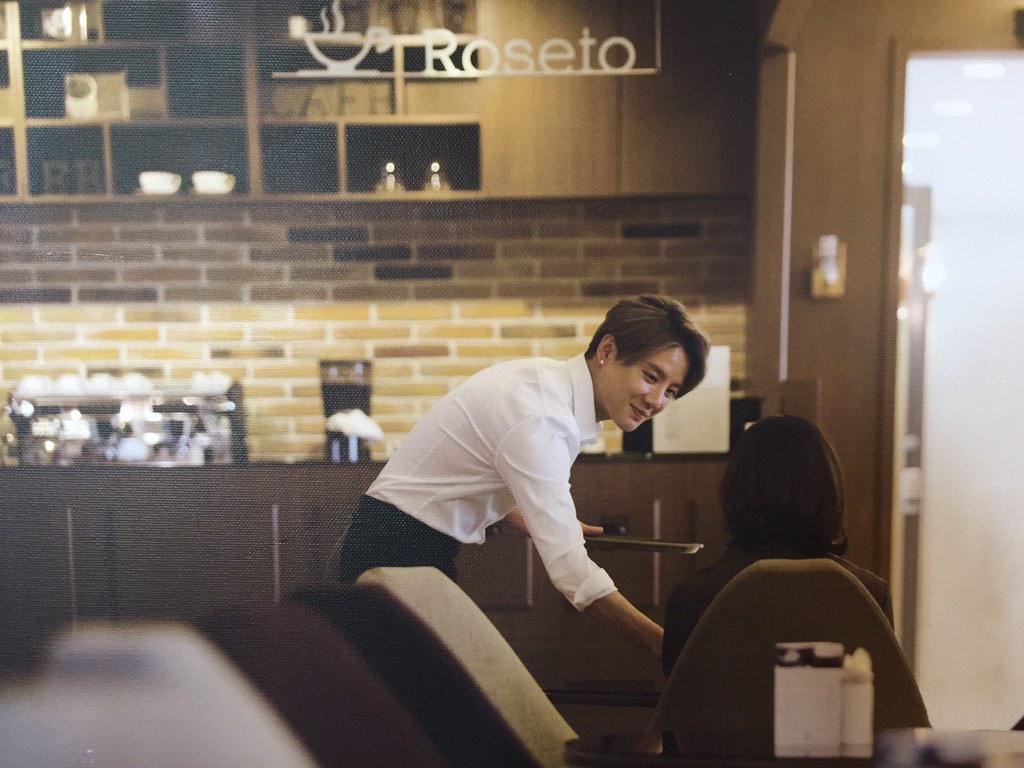
Image credit: OneHallyu
In Korean (Hangeul): 주문할게요
How to pronounce: choo-moon hal-geh-yo
Having pored through that menu that you so painstakingly acquired, it is now time to place your order. Say “choo-moon hal-geh-yo”, which means “I would like to place an order”. To bring your Korean game up a notch, add a kinship term such as “ee-mo” (aunt) for middle-aged women, or “sa-jang-nim” (boss) for restaurant owners. If all else fails, you can always fall back on the trusty “yaw-gi-yo”.
Example: “Ee-mo, choo-moon hal-geh-yo.”
5. “What is not spicy here?” (An maeunge mwoyeyo?)
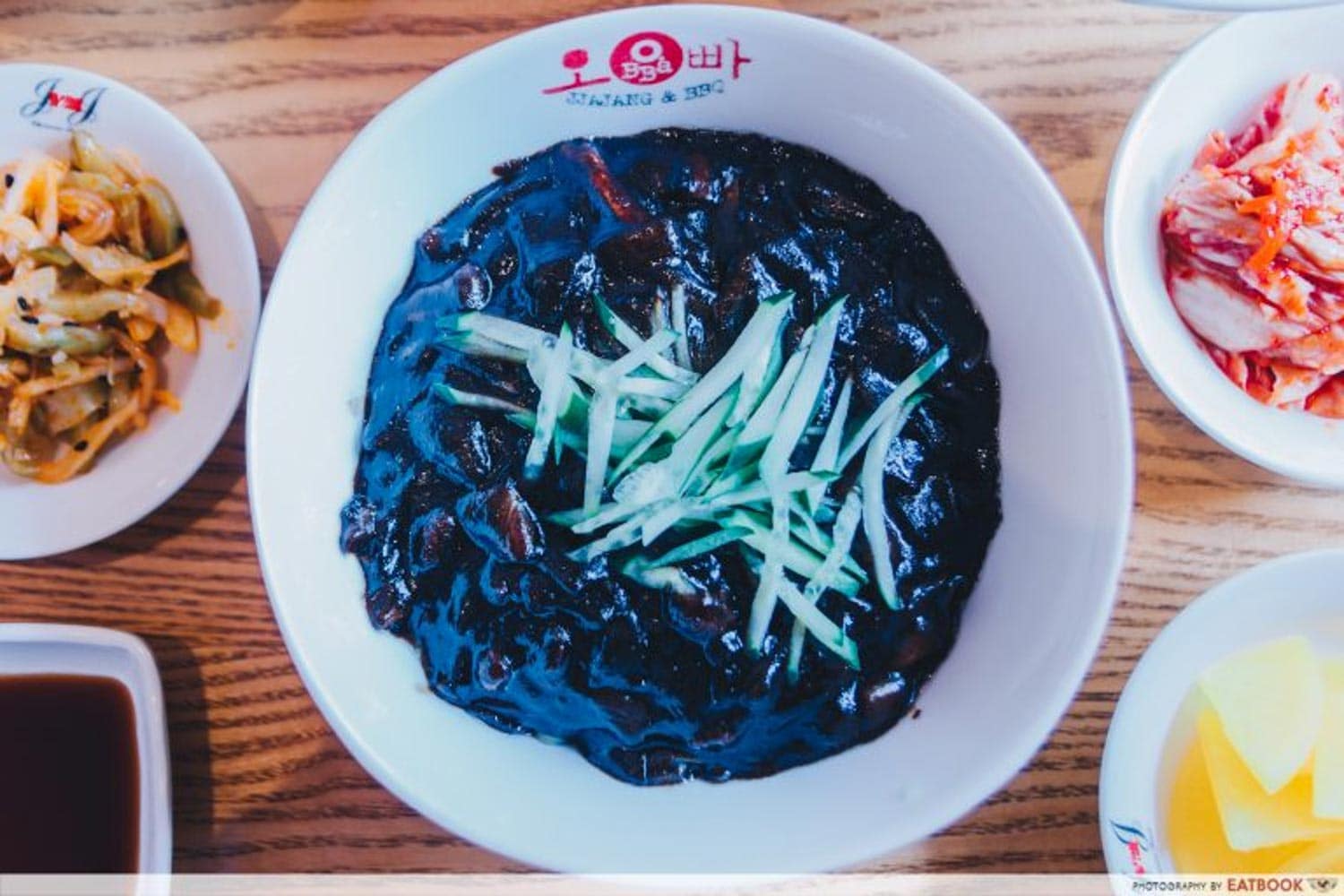 Image credit: Eatbook
Image credit: Eatbook
In Korean (Hangeul): 안 매운게 뭐예요?
How to pronounce: ahn mae-oon-geh mwo-ye-yo?
People who have been to Korea will know this – food in Korea is generally very spicy. From spicy rice cakes to kimchi stew, you can expect a generous dollop of gochujang (Korean red pepper paste) in every other dish. If spicy food isn’t exactly your cup of tea, we recommend you ask the restaurant staff for non-spicy dishes with the phrase “ahn mae-oon-geh mwo-ye-yo?”
6. “Could you recommend something good?” (Masinneungeo chucheonhae juseyo)
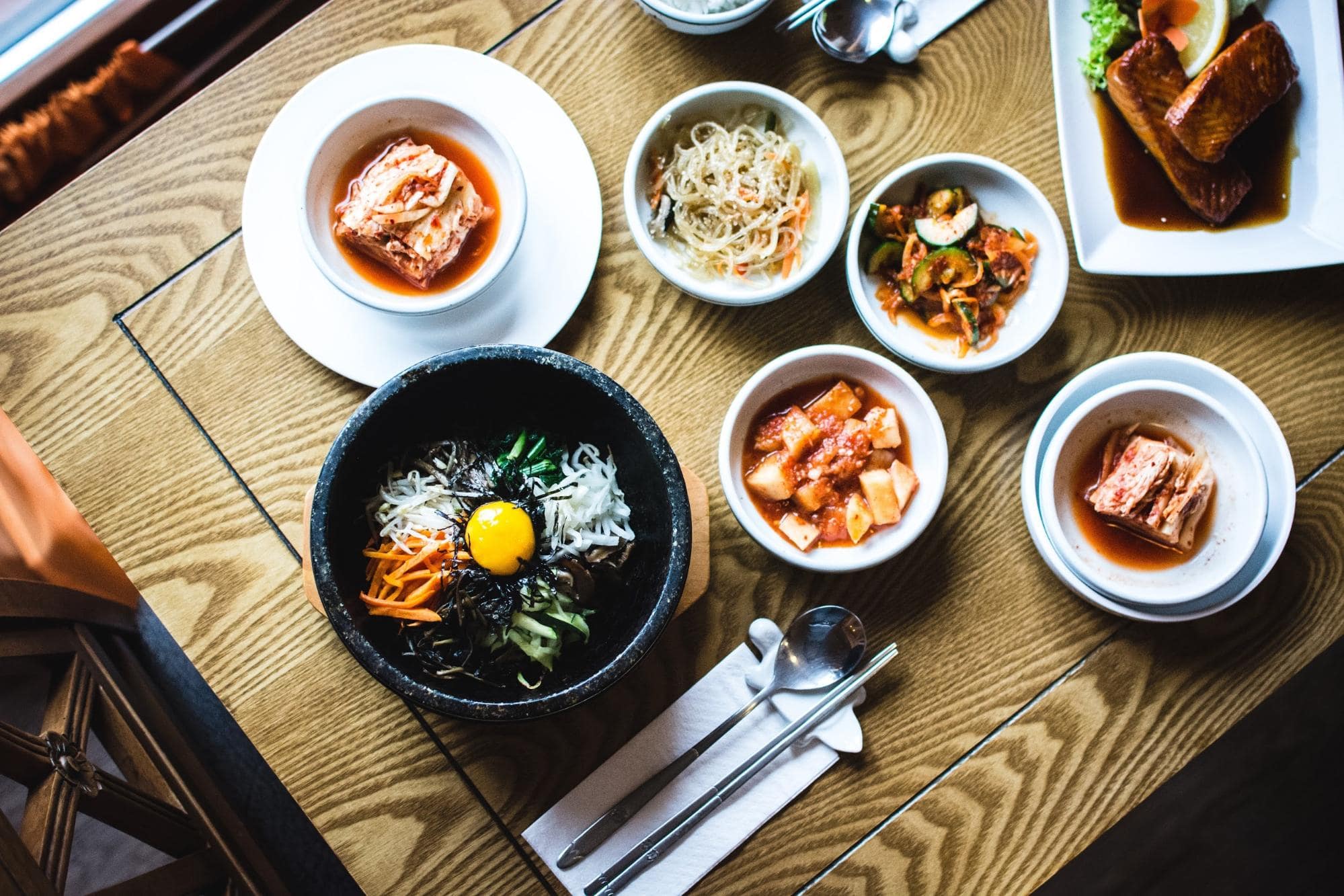
Image credit: Jakub Kapusnak
In Korean (Hangeul): 맛있는거 추천해 주세요
How to pronounce: ma-sit-nen-gaw chu-chawn-hae chu-seh-yo
We know foreign language menus can be a little overwhelming to decipher. Instead of scratching your head while pondering over what to order, you can ask the staff to recommend something delicious by saying “ma-sit-nen-gaw chu-chawn-hae chu-seh-yo”. Yes, we know that “delicious” is subjective, but it won’t hurt to ask for recommendations. This phrase is even more useful when used as a conversation starter with that handsome oppa from the next table.
7. “Please give me this” (Igeo juseyo)
What it is in Korean: 이거 주세요
How to pronounce: ee-gaw chu-seh-yo
Having received recommendations from both the staff and the handsome oppa next table, you are all set to order that mouthwatering stir-fried chicken. Say “ee-gaw chu-seh-yo” while pointing at the item on the menu. “Ee-gaw” means “this”, and “chu-seh-yo” means “please give me”.
8. “Is this spicy?” (Igeo maewoyo?)
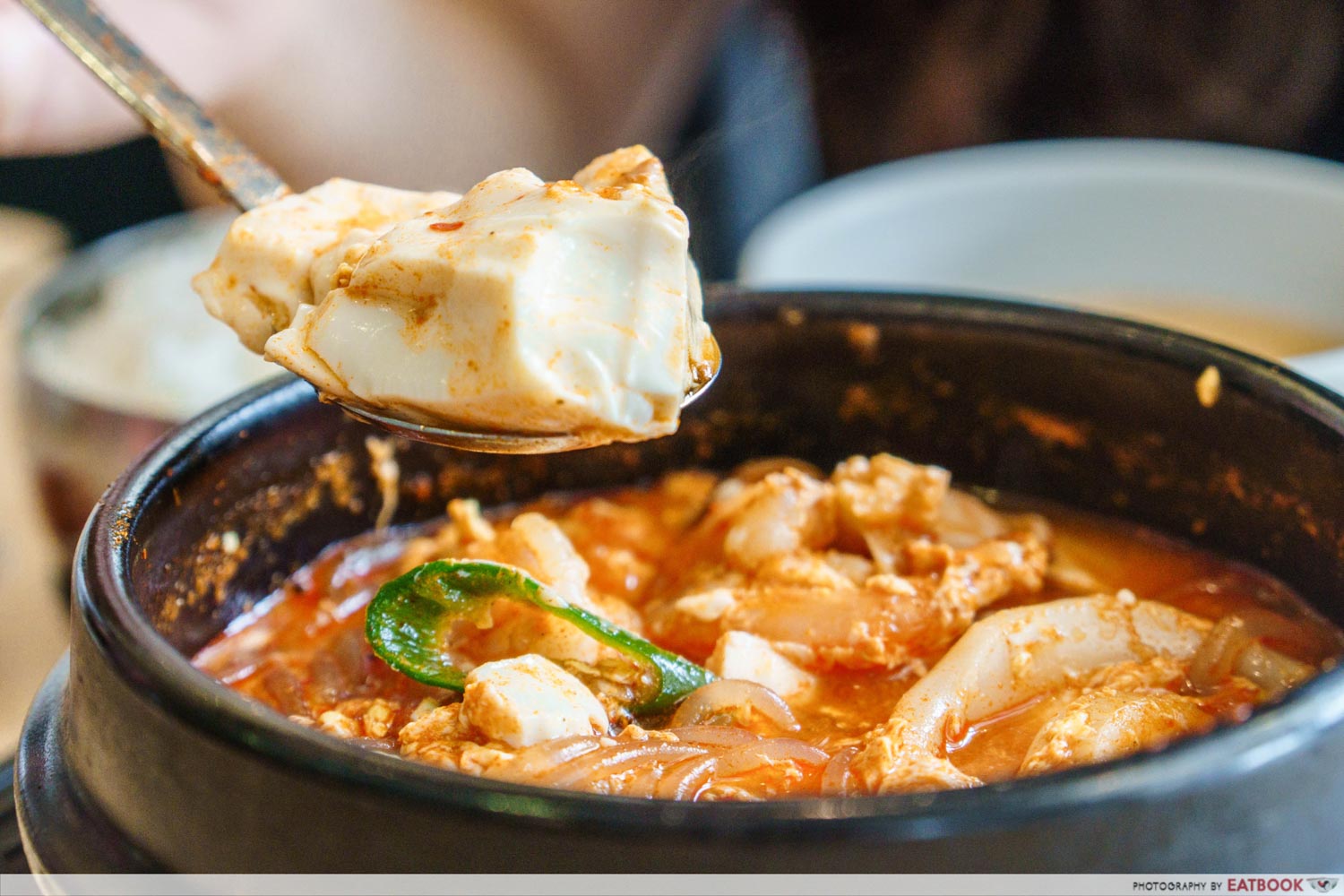
Image credit: Eatbook
What it is in Korean: 이거 매워요?
How to pronounce: ee-gaw mae-wor-yo?
As a rule of thumb, if something appears red, it is most probably spicy. However, for items such as clear soups, meat dishes, or rice rolls that could be more ambiguous-looking, try asking “ee-gaw mae-wor-yo?” when you want to know if it’s spicy. “Yes” in Korean is “neh/yeh”, and “a-ni-yo” is “no”.
9. “Can you make it less/not spicy please?” (Deol/an maepge hae juseyo)
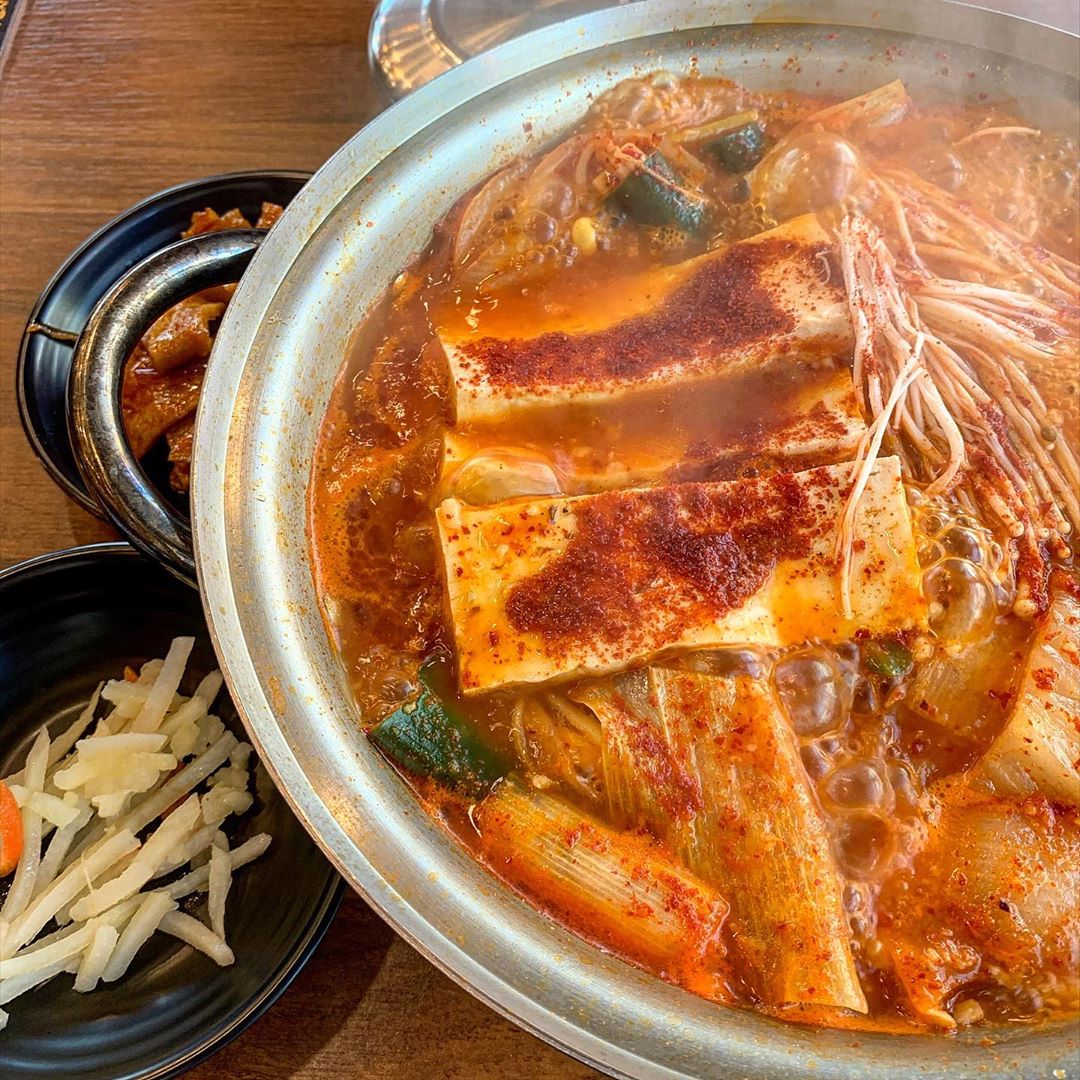
Image credit: @iamhweemom
What it is in Korean: 덜/안 맵게 해 주세요
How to pronounce: tall/ahn maep-geh hae chu-seh-yo
Okay, so you cannot take spicy food as well as oppa does, but you want to have the same dish as him. One solution is to have the kitchen customise your order so that it is not as spicy. “Tall maep-geh hae chu-seh-yo”, which means “could you make it less spicy” will do the trick.
If you want it to be totally not spicy, say “an maep-geh hae chu-seh-yo” instead.
10. “Can I have a refill of the side dishes please?” (Banchan deo juseyo)
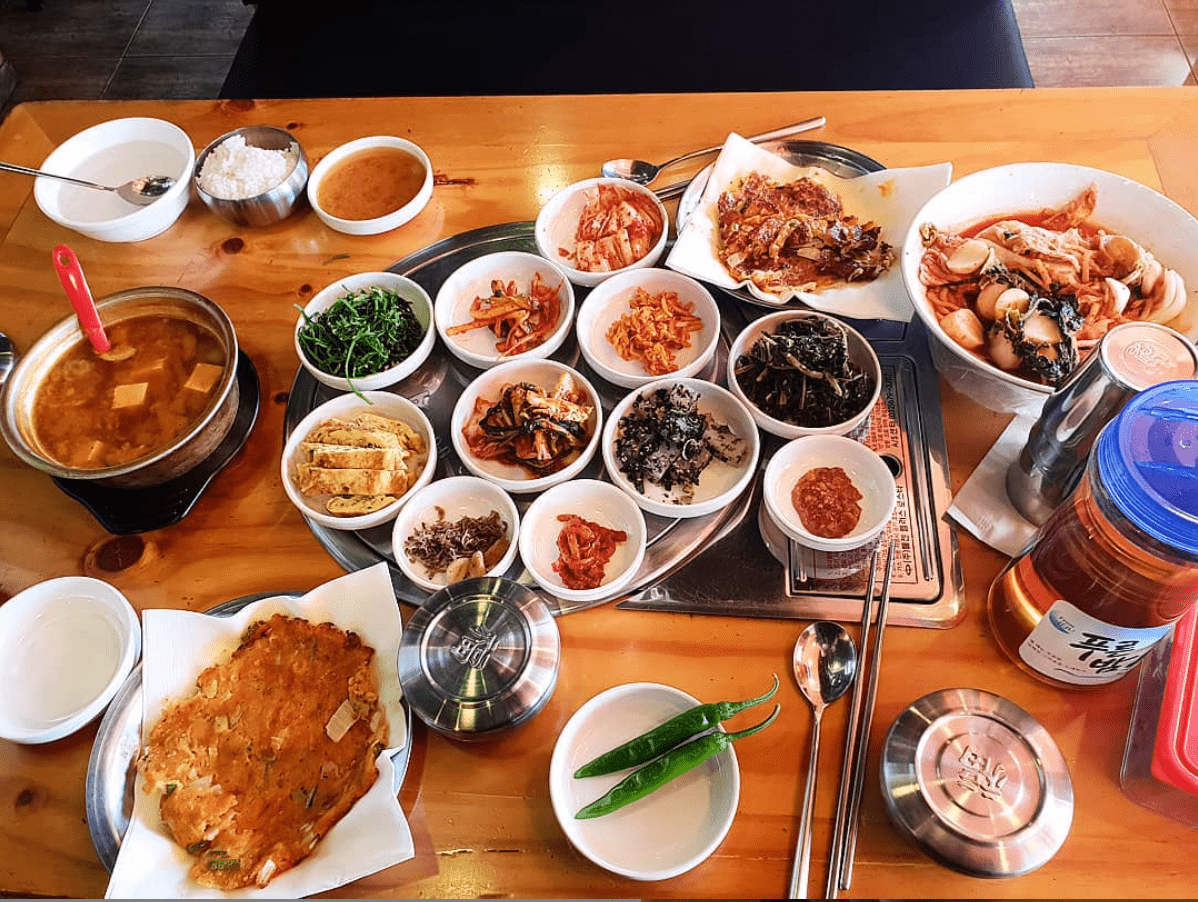
Image credit: @bareun_galbi
What it is in Korean: 반찬 더 주세요
How to pronounce: ban-chan taw-chu-seh-yo
If the best part about eating Korean is the seemingly never-ending plates of side dishes that come with your mains, then the next best thing must be that it’s all refillable for free. Just learn to say “ban-chan taw-chu-seh-yo” while pointing to the empty plates that you want refilled. We know what all Singaporeans are thinking – a cai png buffet for the price of a main. No wonder Korean restaurants are so popular everywhere.
11. “Can I have more water please?” (Mul deo juseyo)

Image credit: @hyunwufafa
What it is in Korean: 물 더 주세요
How to pronounce: mool taw chu-seh-yo
One is inevitably going to get thirsty after consuming all that sodium in the side dishes. Most restaurants have a bottle of water placed on each table or a self-service water dispenser somewhere. If you need help refilling the bottle, ask for it nicely by saying “mool taw chu-seh-yo”.
12. “Can I have a bowl of rice please?” (Gonggibap hana juseyo)
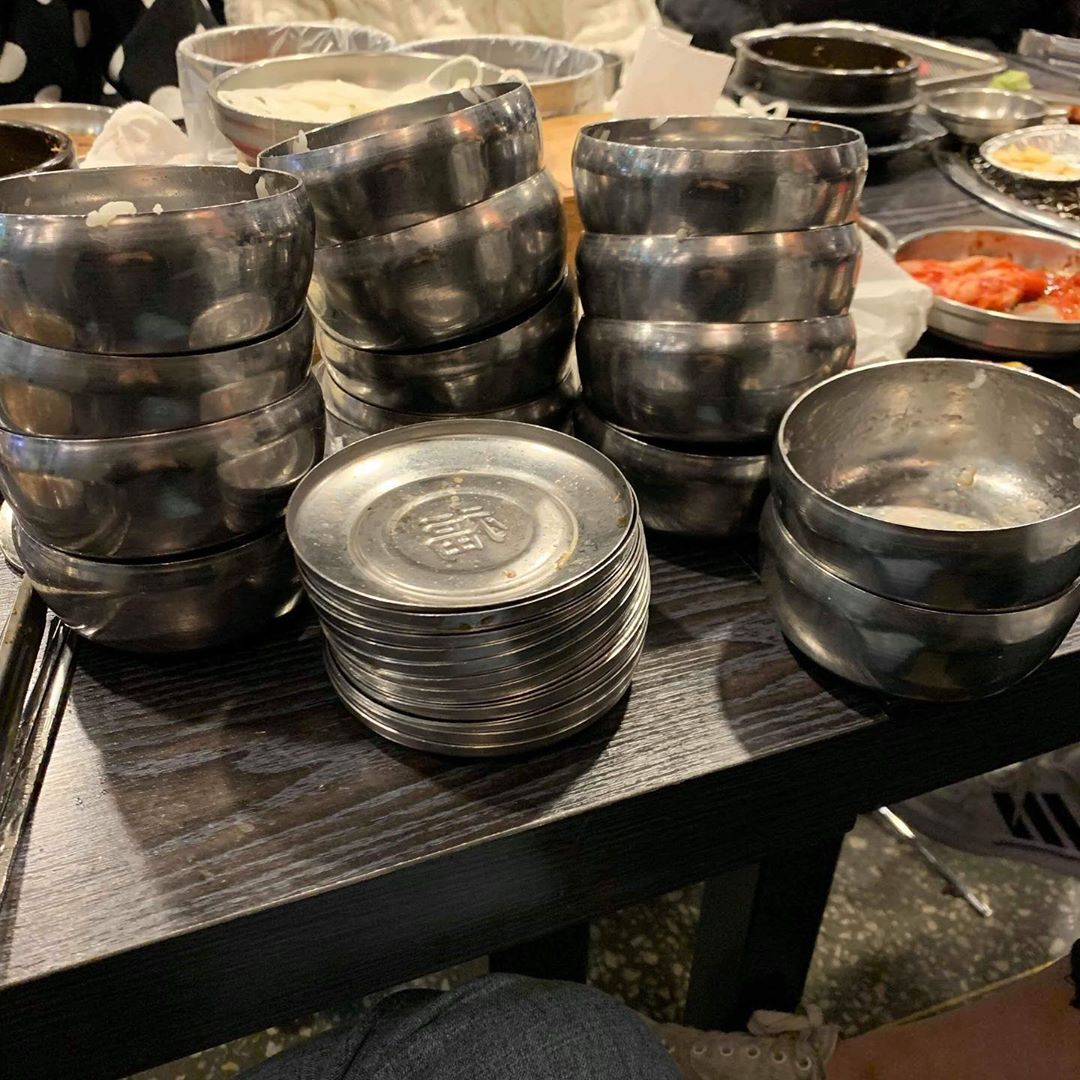
Image credit: @_jyuri908
What it is in Korean: 공기밥 하나 주세요
How to pronounce: kong-gi-bap ha-na chu-seh-yo
“Kong-gi-bap ha-na chu-seh-yo” is a common phrase you’d hear in restaurants, maybe because of all the refillable side dishes you could get. Use this phrase when you need to get another bowl of rice, but do note that you have to pay for them unlike the side dishes and water. For reference, if you are a big eater and need more to satiate your appetite, replace “ha-na” (one) with “tu-geh” (two), “seh-geh” (three) or “neh-geh” (four).
13. “Can you help me pack this up please?” (Igeo pojanghae juseyo)
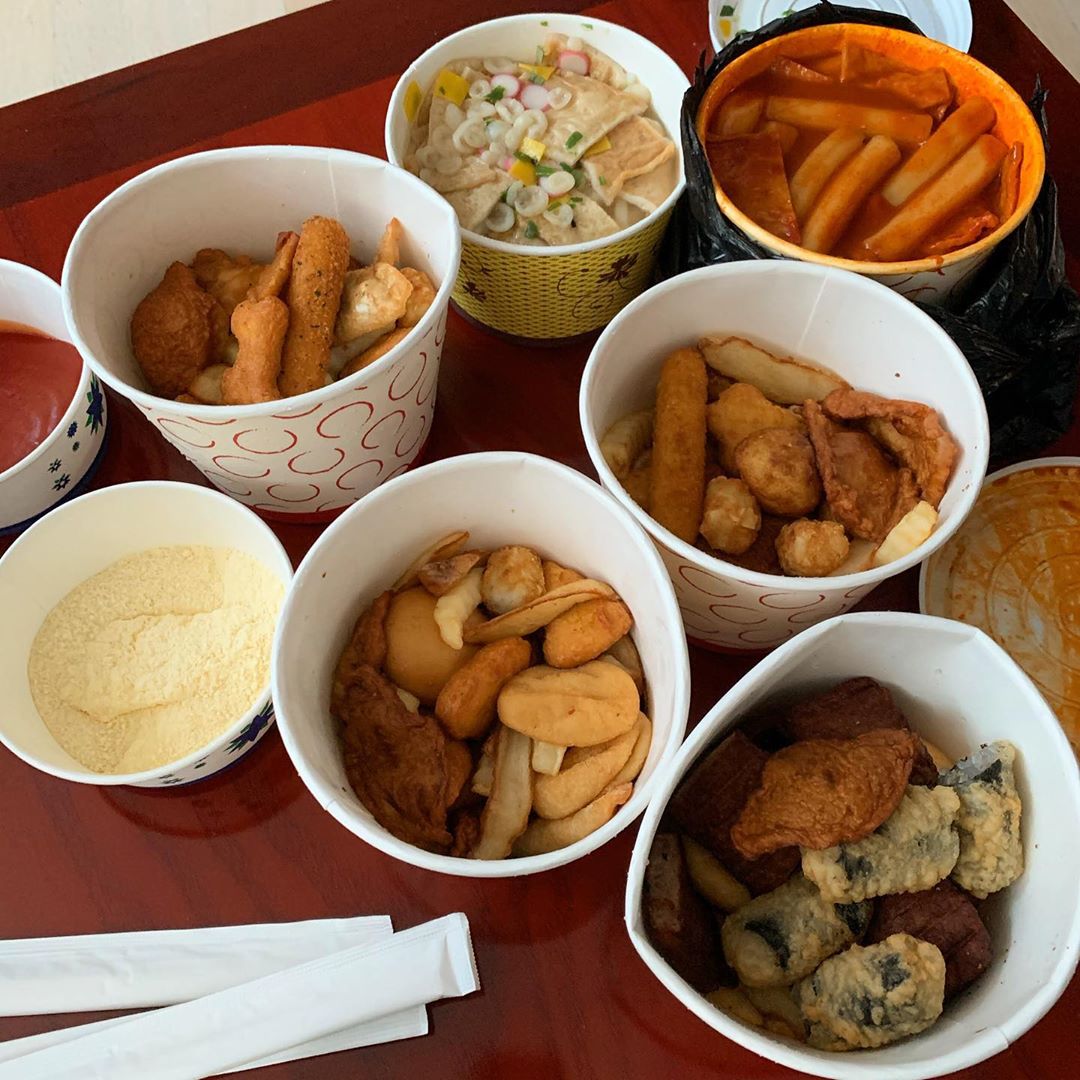
Image credit: @sy_little_lotus
What it is in Korean: 이거 포장해 주세요
How to pronounce: ee-gaw po-jang-hae chu-seh-yo
So you over-ordered your rice and have too much food left over. Tsk tsk. Ask the staff to pack your food into takeout containers by saying “ee-gaw po-jang-hae chu-seh-yo”. Most restaurants would usually do this at no additional charge. Just don’t ask them to pack the side dishes as well, for that’s a big-no-no.
14. “I have had a great meal” (Jal meogeotseumnida)
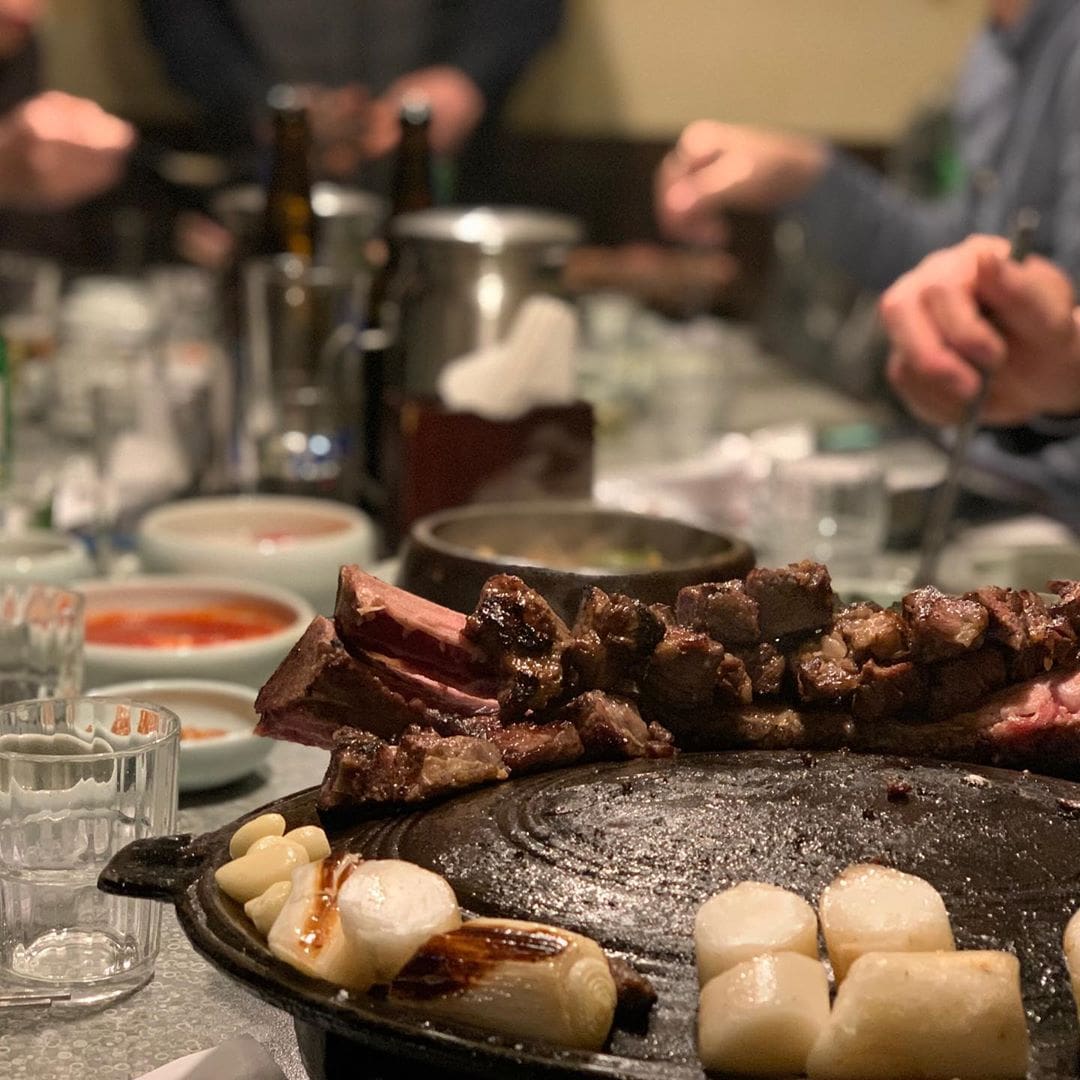
Image credit: @aram3513
What it is in Korean: 잘 먹었습니다
How to pronounce: chal maw-got-sem-ni-da
Literally meaning “I have eaten well”, but more naturally translated to as “thank you for the meal”, Koreans often use this phrase at the end of a meal to thank the chef or the person paying for the meal. After a hearty meal, try saying this to the chef or a staff who passes by to show your appreciation. This phrase can be accompanied with a slight inclination of your head.
15. “I would like to settle the bill please” (Gyesanhalgeyo)
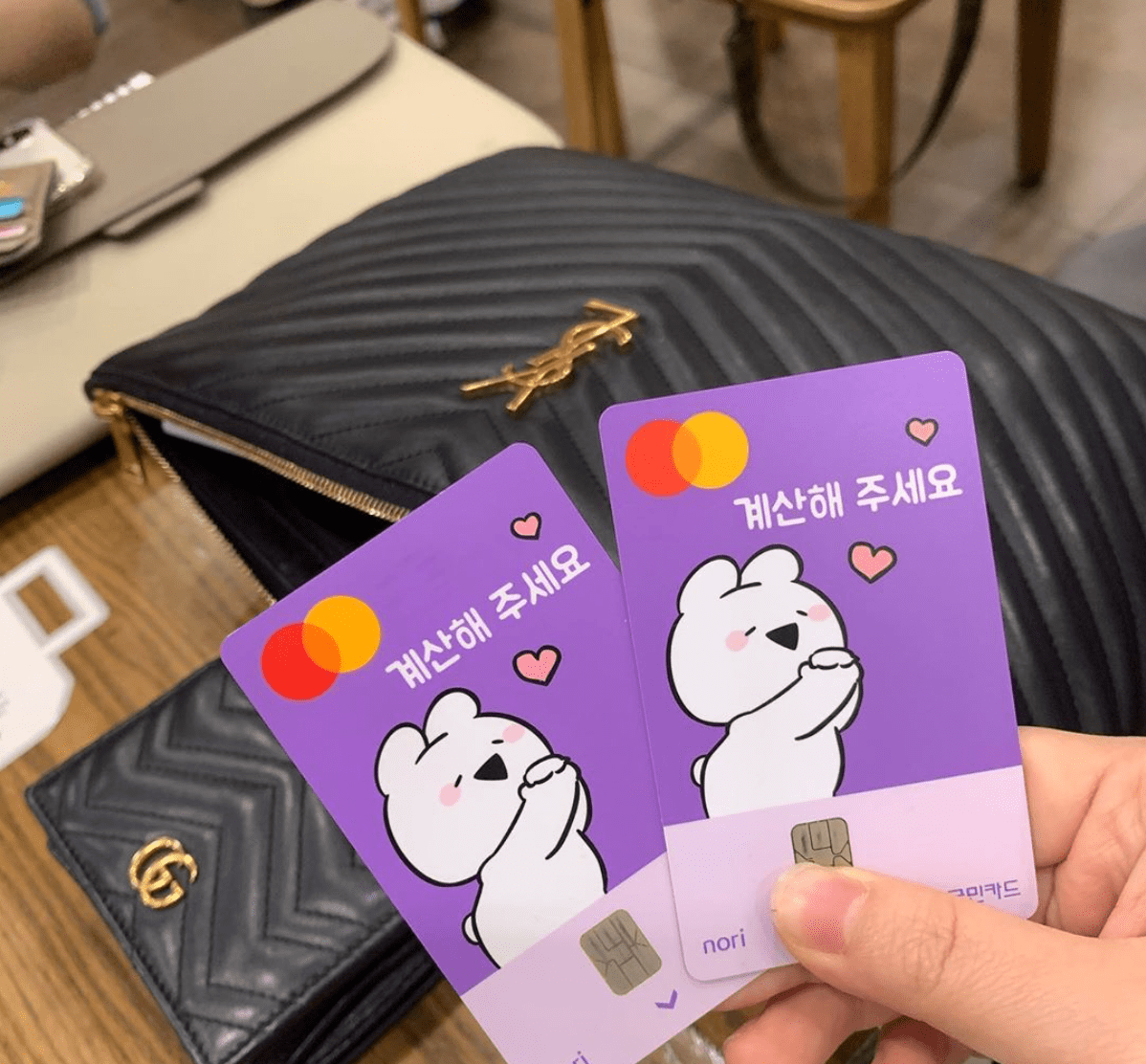
Image credit: @mingming__810
What it is in Korean: 계산할게요
How to pronounce: kye-san-hal-geh-yo
Most Korean restaurants take payment over the counter. Head over to the counter when you are done with your meal and say “kye-san-hal-geh-yo”. If the counter is unmanned, it is fine to say it loudly in order to get the attention of the staff.
Bonus: “Thank you and goodbye” (Gamsahamnida. Annyeonghi gyeseyo)

Image credit: @jjang_hyun
What it is in Korean: 감사합니다. 안녕히 계세요
How to pronounce: kam-sa-ham-ni-da. an-nyeong-hi-kye-seh-yo
Here’s a bonus – most people already know that “thank you” in Korean is “kam-sa-ham-ni-da”, but if you pay enough attention, you might also find Koreans saying “an-nyeong-hi-kye-seh-yo” when leaving the premise. This phrase means “goodbye” and is used with someone who is staying put after parting company.
Remember to say it to the “ee-mo” who has fed you so well.
Ordering food like the Koreans do
These 15 phrases are not exhaustive and you will still find yourself gesticulating and peppering your sentences with English words all the time. Nevertheless, it’s important to go the extra mile and speak the locals’ language while travelling. Koreans tend to be appreciative of foreigners’ efforts to speak their language, and you might even find yourself with more free food in the process. Now go on and put all the Korean that you have just learnt to good use. The next-table oppa will be impressed.
Kam-sa-ham-ni-da for reading this article.
Check out these articles for more places you should visit in Seoul.
